
Swiss Neoclassical Painter
1741 - 1807

She was born at Chur in Graubunden, Switzerland, but grew up in Schwarzenberg in Vorarlberg/Austria where her family originated. Her father, Joseph Johann Kauffmann, was a relatively poor man but a skilled painter that was often traveling around for his works. He was apparently very successful in teaching his precocious daughter. She rapidly acquired several languages from her mother Cleophea Lutz, read incessantly, and showed marked talents as a musician. Her greatest progress, however, was in painting; and in her twelfth year she had become a notability, with bishops and nobles for her sitters. In 1754 her father took her to Milan. Later visits to Italy of long duration followed: in 1763 she visited Rome, returning again in 1764. From Rome she passed to Bologna and Venice, being everywhere feted and caressed, as much for her talents as for her personal charms.
Writing from Rome in August 1764 to his friend Franke, Winckelmann refers to her exceptional popularity. She was then painting his picture, a half-length, of which she also made an etching. She spoke Italian as well as German, he says; and she also expressed herself with facility in French and English, one result of the last-named accomplishment being that she became a popular portraitist for English visitors to Rome. "She may be styled beautiful," he adds, "and in singing may vie with our best virtuosi." While at Venice, she was induced by Lady Wentworth, the wife of the German ambassador, to accompany her to London. One of her first works was a portrait of David Garrick, exhibited in the year of her arrival at "Mr Moreing's great room in Maiden Lane." The rank of Lady Wentworth opened society to her, and she was everywhere well received, the royal family especially showing her great favor.

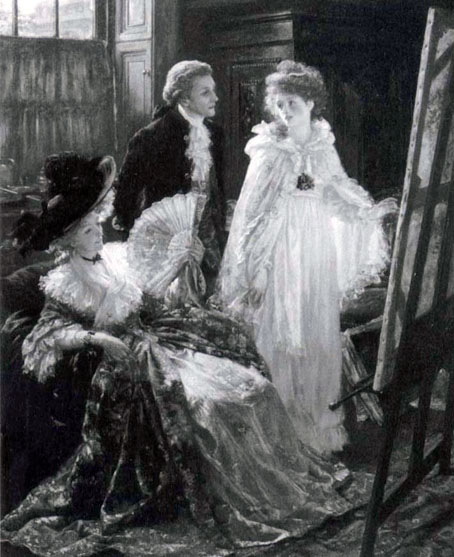
Her firmest friend, however, was Sir Joshua Reynolds. In his pocket-book, her name as Miss Angelica or Miss Angel appears frequently, and in 1766 he painted her, a compliment which she returned by her Portrait of Sir Joshua Reynolds. Another instance of her intimacy with Reynolds is to be found in her variation of Guercino's 'Et in Arcadia ego', a subject which Reynolds repeated a few years later in his portrait of 'Mrs Bouverie and Mrs Crewe'.
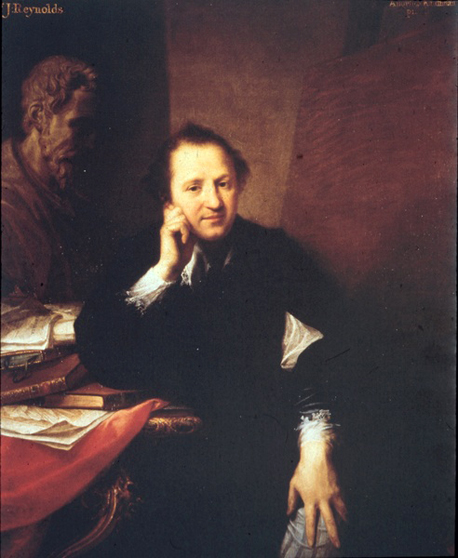
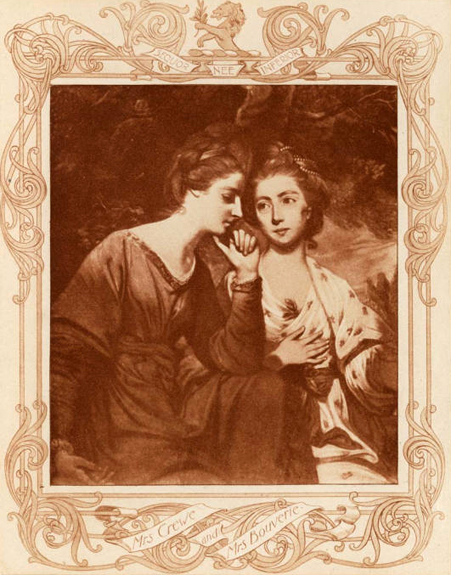
When, in about November 1767, she was entrapped into a clandestine marriage with an adventurer who passed for a Swedish Count (the Count de Horn), Reynolds helped extract her. It was doubtless owing to his good offices that she was among the signatories to the famous petition to the king for the establishment of the Royal Academy of Painting and Sculpture. In its first catalogue of 1769 she appears with "R.A." after her name (an honor she shared with one other lady, Mary Moser); and she contributed the Interview of Hector and Andromache, and three other classical compositions.
Her friendship with Reynolds was criticized in 1775 by fellow Academician Nathaniel Hone in his satirical picture "The Conjurer". This attacked the fashion for Italianate Renaissance art, ridiculed Reynolds, and included a nude caricature of Kauffmann, later painted out by Hone. The work was rejected by the Royal Academy.

"The Pictorial Conjurer displaying the Whole Art of Optical Deception" the picture is a direct attack on Sir Joshua Reynolds the then president of The Royal Academy.
In 1774 Reynolds in a lecture to the academy at a prize giving ceremony argued the importance of copying not just from nature but from the old masters as well. A year later Hone produced this picture but it was rejected by the academy although it had originally been accepted until a complaint from the artist Angelica Kauffman in which she claimed that she had been represented as a nude in the top left of the picture. This however was really just a ruse and the real complainant was Reynolds. Hone later painted out the nude figures and went on to exhibit the painting at no.70 St. Martins Lane in London where it probable received more notice than it might have if it had been exhibited at the academy. This is believed to be the first one man show in Britain. A sketch in oils for the painting is to be seen in The Tate Gallery, London.
This is not the only time that Hone had trouble with the academy over one of his pictures. In 1770 The Royal Academy asked him to make changes to one of his paintings in which a Capuchin Friar while seated at a table could be seen stirring a bowl of punch with a crucifix.
From 1769 until 1782, she was an annual exhibitor, sending sometimes as many as seven pictures, generally classic or allegorical subjects. One of the most notable was 'Leonardo expiring in the Arms of Francis the First 1778'. In 1773 she was appointed by the Academy with others to decorate Saint Paul's Cathedral, and it was she who, with Biagio Rebecca, painted the Academy's old lecture room at Somerset House.
Kauffmann's strength was her work in history painting, the most elite and lucrative category in academic painting during the 18th century. Under the direction of Sir Joshua Reynolds, the Academy made a strong effort to promote history painting to a native audience who were more interested in commissioning and buying portraits and landscapes. Despite the popularity that Kauffmann enjoyed in English society and her success as an artist, she was disappointed by the relative apathy that the English had for history painting. Ultimately, she left England for the continent where history painting was better established, esteemed, and patronized.
_in_the_company_of_other_Bluestockings_ (1778).jpg)
It is probable that her popularity declined a little in consequence of her unfortunate marriage; but in 1781, after her first husband's death (she had been long separated from him), she married Antonio Zucchi (1728-1795), a Venetian artist then resident in England. Shortly afterwards she retired to Rome, where she befriended, among others, Johann Wolfgang von Goethe, who said she worked harder and accomplished more than any artist he knew, yet always restive she wanted to do more (Goethe's 'Italian Journey' 1786-1788) and lived for 25 years with much of her old prestige. In 1782 she lost her father; and in 1795, her husband. She continued at intervals to contribute to the Academy, her last exhibit being in 1797. After this she produced little, and in 1807 she died in Rome, being honored by a splendid funeral under the direction of Canova. The entire Academy of Saint Luke, with numerous ecclesiastics and virtuosi, followed her to her tomb in San Andrea delle Fratte, and, as at the burial of Raphael, two of her best pictures were carried in procession.
The works of Angelica Kauffmann have not retained their reputation. She had a certain gift of grace, and considerable skill in composition. But her figures lack variety and expression; and her men are masculine women (it is worth noting that, at the time, female artists were not allowed access to male models). Her coloring, however, is fairly enough defined by Gustav Friedrich Waagen's term "cheerful". As of 1911, rooms decorated by her brush were still to be seen in various quarters. At Hampton Court was a portrait of the 'Duchess of Brunswick'; in the National Portrait Gallery, a self-portrait. There were other pictures by her at Paris, at Dresden, in the Hermitage at Saint Petersburg, and in the Alte Pinakothek at Munich. The Munich example was another portrait of herself; and there was a third in the Uffizi at Florence. A few of her works in private collections were exhibited among the Old Masters at Burlington House. But she is perhaps best known by the numerous engravings from her designs by Schiavonetti, Bartolozzi and others. Those by Bartolozzi especially still found considerable favor with collectors.
Charles Willson Peale (1741-1827), artist, patriot, and founder of a major American art dynasty, named several of his children after great European artists, including a daughter, Angelica Kauffman Peale. Her life was written in 1810 by Giovanni de Rossi. It has also been used as the basis of a romance by Leon de Wailly (1838) and it prompted the charming novel contributed by Mrs Richmond Ritchie to the Cornhill Magazine in 1875 entitled Miss Angel.
She should not be confused with painter Angelika Kaufmann, who was born in 1935 in Carinthia, Austria.
.jpg)
.jpg)
.jpg)
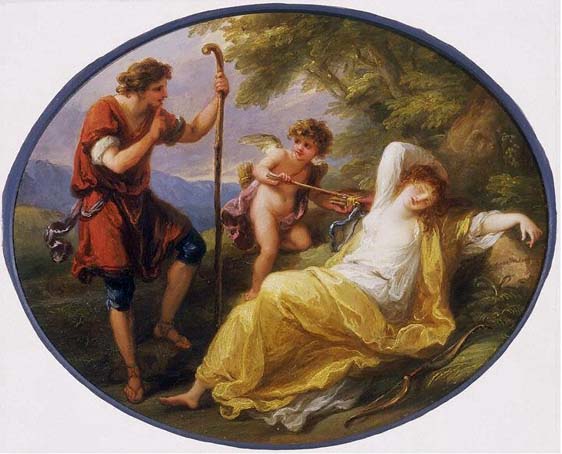
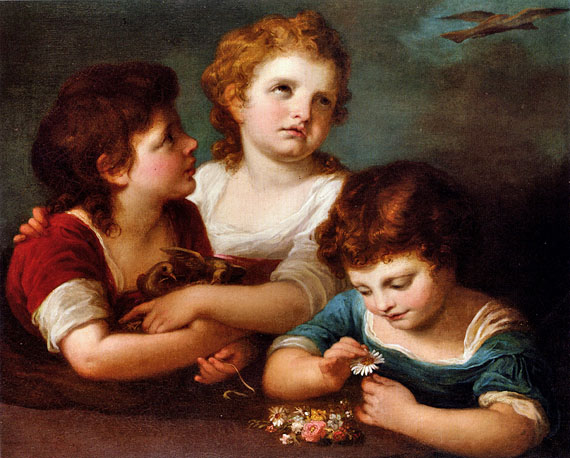
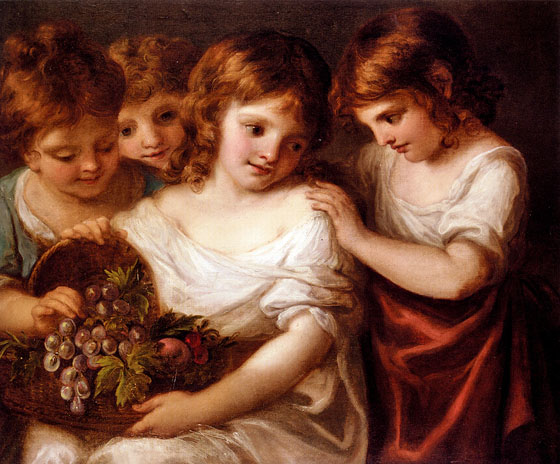
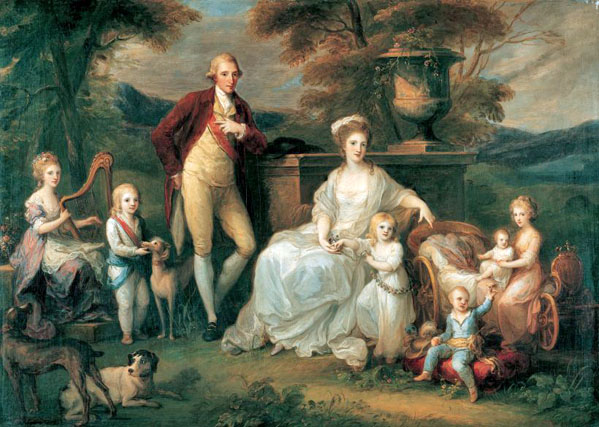
In her list of works the painter includes a detailed description of the completed family portrait: 'The King is represented in a standing pose, as if he had just returned from the hunt, the Queen sits surrounded by her children, next to her is a cradle, or rather a child's wagon... The entire royal family is simply clothed and the painting depicts a rustic scene.'
The history behind this painting, the principal work of the artist's portrait oeuvre, is exceptionally well documented. The modello in the Princely Collections summarizes the results of the initial sketches and the intensive portrait sittings. The elaborately detailed painting followed the oil sketch.
The royal couple's seventh child was stillborn during the preparation phase for the painting. The artist then painted a veil over the child already in the cradle, which had been clearly visible in the modello.
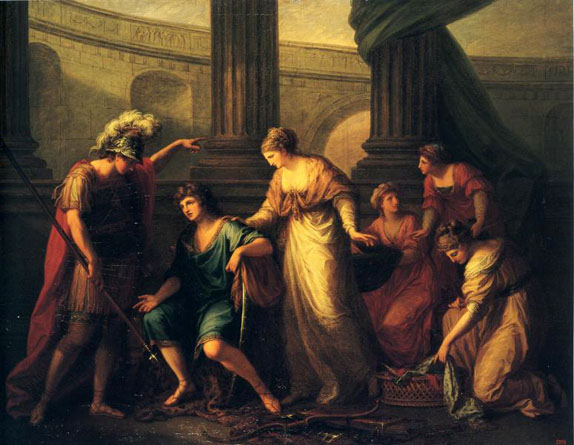
Some have thought that just as Hector could be the incarnation of bravery, his brother Paris could be that of cowardice. For that reason, reproaches of all kinds have fallen upon the head of this handsome man, whose deeds, some affirm, caused the ruin of Troy. Yet, the burden of cowardice may be heavier than the toil of courage, and it also takes a man to bear it to the end of time. Courage has its reward, but for him who has been appointed by nature or the gods to play the part of the coward, there is no rest, now or later. And these issues being matter of opinion, Paris was also accused, near the end of his life, of being too bold.
Courage, 'a strange thing'
Courage comes and leaves as it pleases. For even Hector, the bravest among the braves, trembled when he confronted Achilles, and ran away, being pursued by his enemy around the walls of Troy like a hare by a dog. And if he finally faced Achilles, it was because a goddess, who wished his death, fooled him to do so.
Paris' greatest prowess in war
And what brave Hector, though being the pillar of Troy, could not accomplish in close combat, was later done by Paris from the distance. For him, using weapons adapted to what has been thought to be his less audacious nature, put an end to Achilles' life, thus avenging the brother who had despised him.
The gods needed a seducer
But all these matters were, as many say, 'on the knees of the gods'. Being so, a seducer was needed, since (as it is told) it was the will of Zeus to make his daughter Helen famous for having entangled Europe and Asia in hostility. Others assert that the god just wished to exalt the race of the demigods. But in any case, Zeus, having planned with Themis how to bring about the Trojan War, appointed the shepherd Paris to judge the goddesses in Mount Ida, where Aphrodite gave him the promised bribe, Helen, in exchange for the Apple of Eris (Discord) that Paris awarded her.



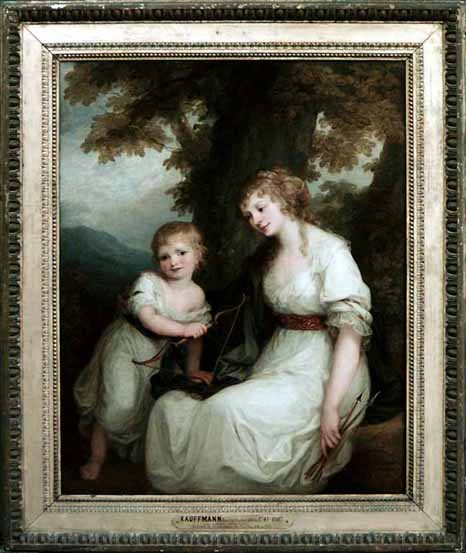

.jpg)
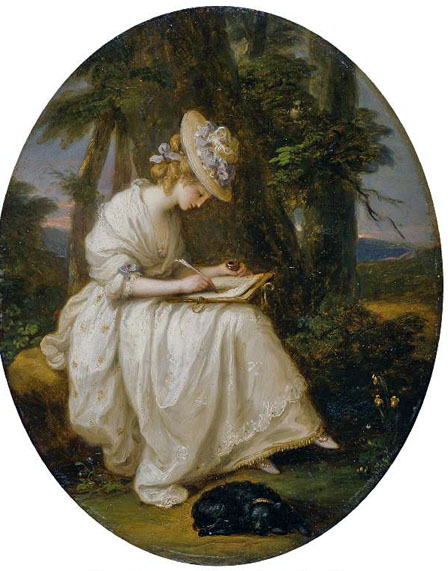
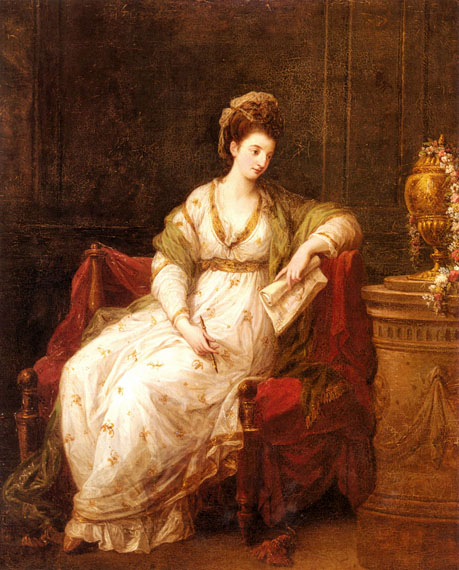
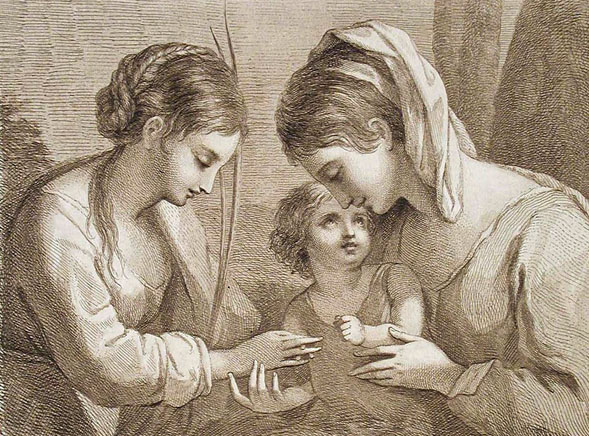
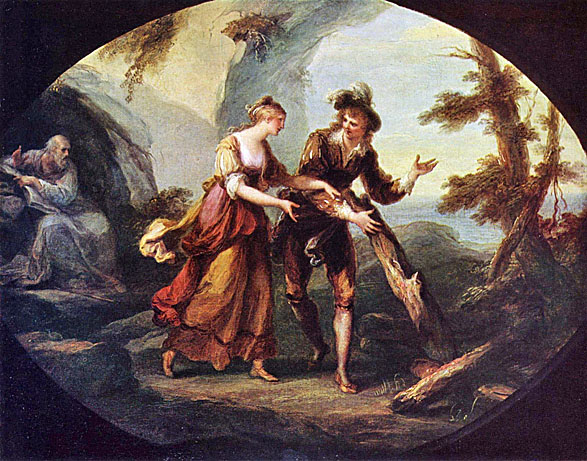
.jpg)
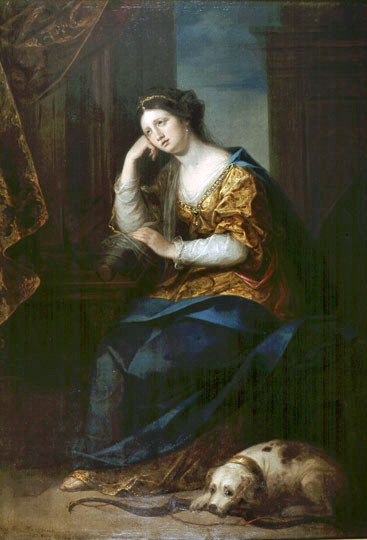
.jpg)
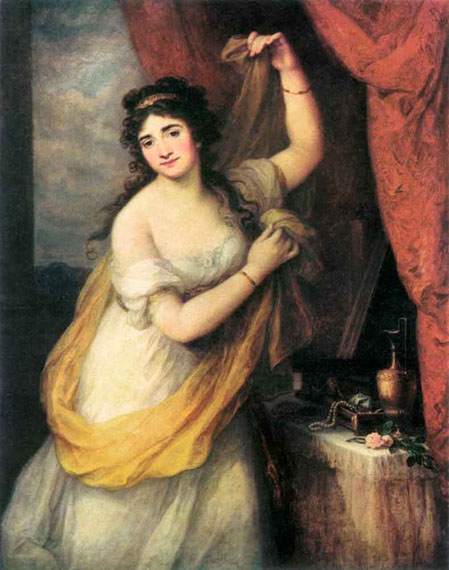
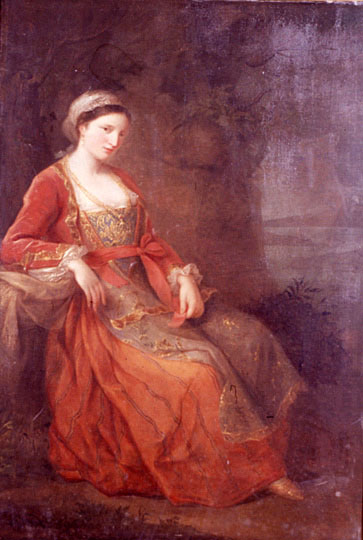
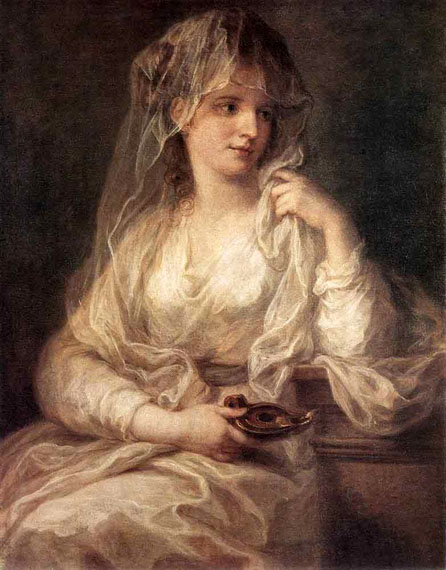

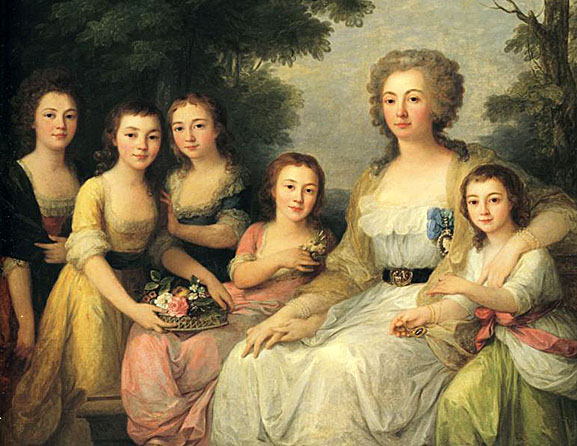
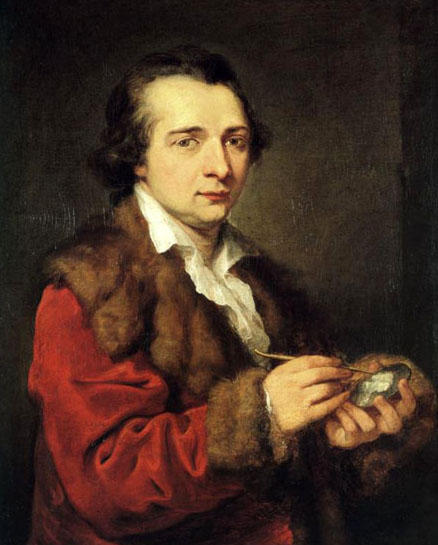
.jpg)
.jpg)
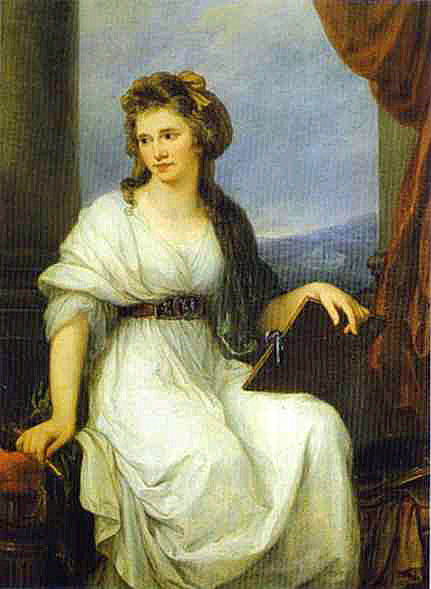
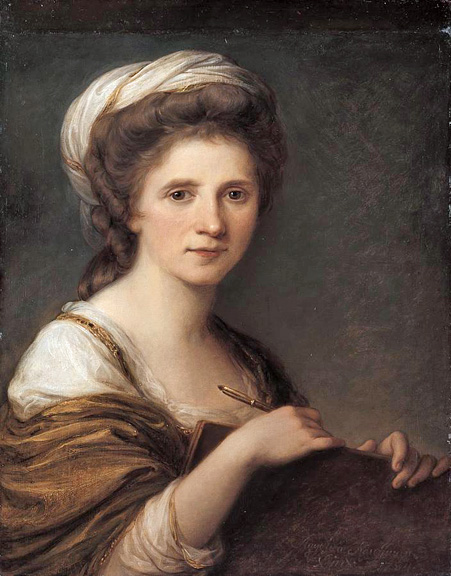
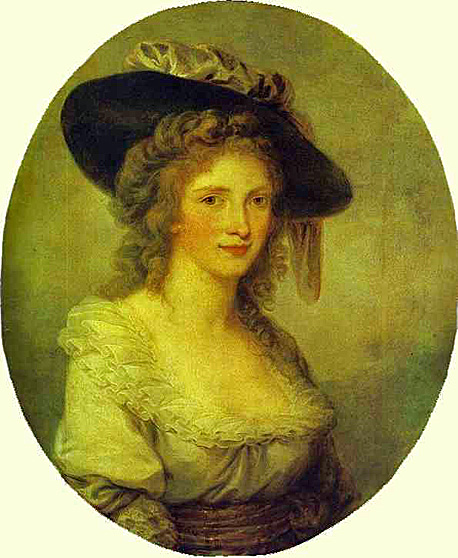
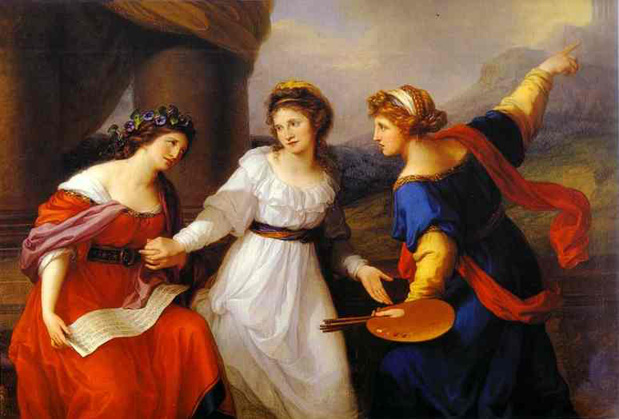
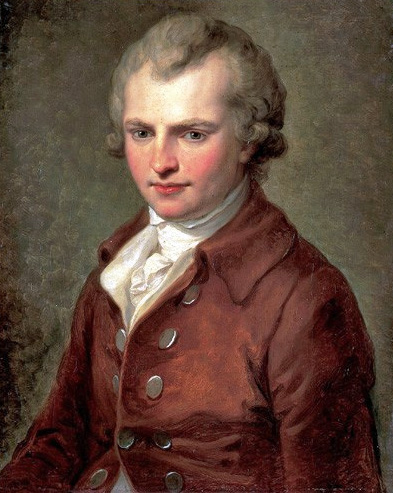

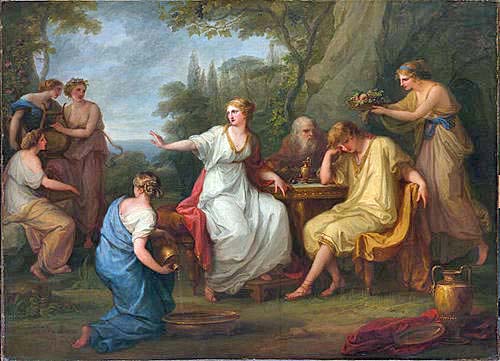
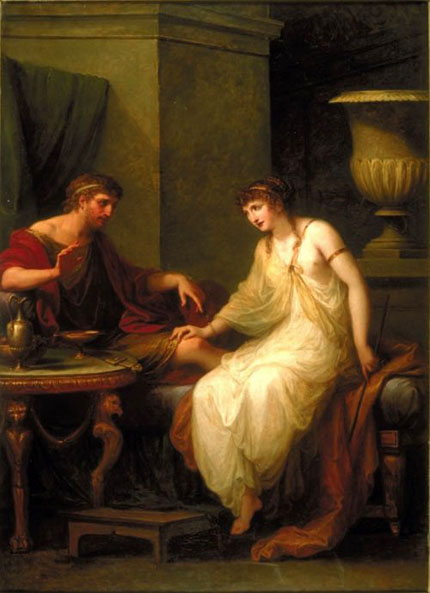
Ulysses and his men set sail for Ithaca. After a few weeks of sailing, Ulysses and his men ran out of food. They landed on an island, to look for food and water. They found a whole cave full of food, but they soon found out that the food belonged to a one-eyed giant called Polyphemus. Ulysses and his men tricked Polyphemus and escaped with the food. Unfortunately for Ulysses, Polyphemus was a son of Neptune, the God of the Sea.
Once again, Ulysses' men ran out of food, so they landed on another island. The sailors divided into two groups, Ulysses and some of the crew stayed with the ship, while the others went to look for food. The next morning, one of the "food-searchers" came running back to the boat. The sailor told Ulysses of a sorceress named Circe who had turned the other crew members into hogs. At once, Ulysses ran with the sailor to Circe's palace, but on the way, Mercury came with a gift from one of the gods. It was a magical flower that would act a shield on Ulysses from Circe's magic. Ulysses met with Circe. Circe tried to use her magic on him, but it didn't work, so she gave in and turned the back into humans. Plus, she warned Ulysses of the dangers to come. With lots of food, Ulysses and his men left the island.
Thanks to Circe, Ulysses overcame the next dangers. He overcame the dooming song of the Sirens by plugging his ears and his crew. The sailors came upon the six-headed monster called Scylla. Though all of his crew were eaten by Scylla, Ulysses escaped, only to be washed ashore by a storm where a princess found him and took him to her father. The king gave Ulysses his fastest ship to use to sail home with. When, Ulysses reached Ithaca, he deceived the men that wanted to marry his wife, and killed them. Ulysses finally reclaimed his throne.
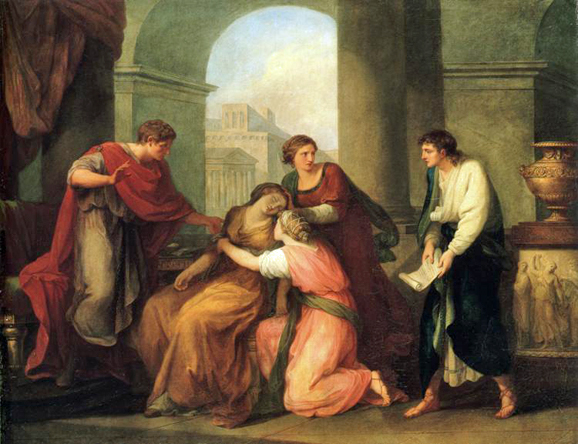
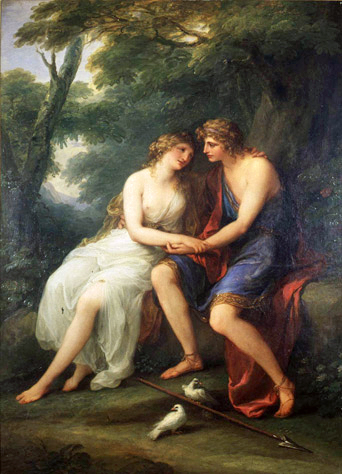
Vilia miretur vulgus; mihi flavus Apollo
Pocula Castalia plena ministret aqua
TO THE
RIGHT HONOURABLE
HENRY WRIOTHESLEY,
EARL OF SOUTHAMPTON, AND BARON
OF TITCHFIELD
Right Honourable,
I know not how I shall offend in dedicating my unpolished lines to
your lordship, nor how the world will censure me for choosing so
strong a prop to support so weak a burden: only, if your honour seem
but pleased, I account my self highly praised, and vow to take
advantage of all idle hours, till I have honoured you with some graver
labour. But if the first heir of my invention prove deformed, I
shall be sorry it had so noble a godfather, and never after ear so
barren a land, for fear it yield me still so bad a harvest. I leave it
to your honourable survey, and your honour to your heart's content;
which I wish may always answer your own wish, and the world's
hopeful expectations.
Your honour's in all duty,
William Shakespeare
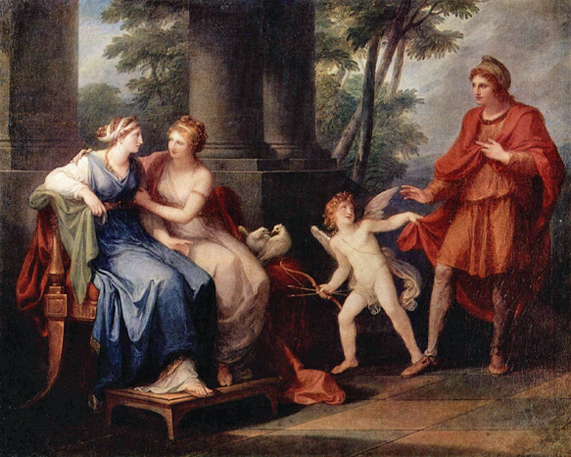
Three goddesses, Athena, Hera and Aphrodite quarreled over a golden apple with a sign that it should belong to the most beautiful among them. No one wanted to take a task of choosing between three goddesses. Zeus therefore sent them off to Paris, son of Priam, King of Troy. Paris decided in favor of Aphrodite, who had promised him the most beautiful mortal woman, Helen, the wife of Menelaus. The Greek playwright Aeschylus called Helen 'destroyer of ships, destroyer of men, destroyer of cities'. The result of Paris' decision was the Trojan War.
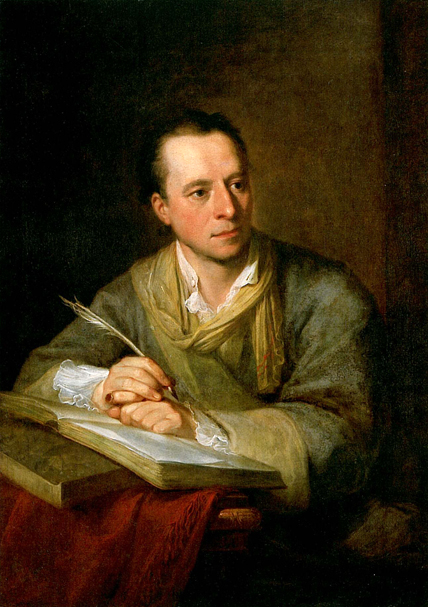
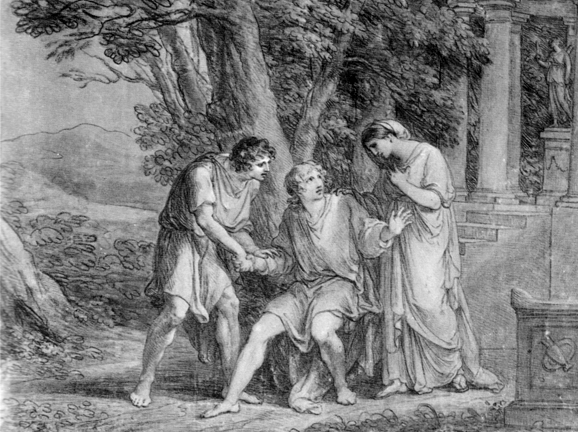
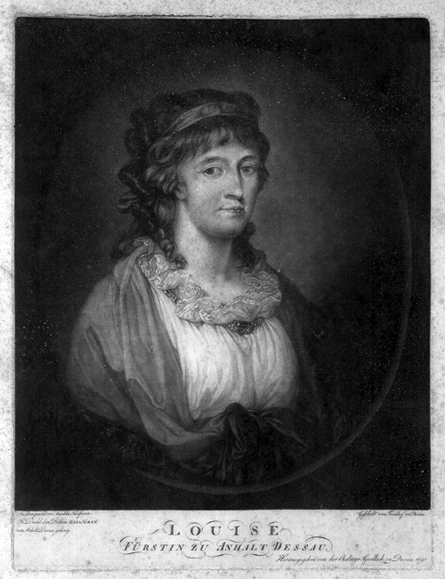
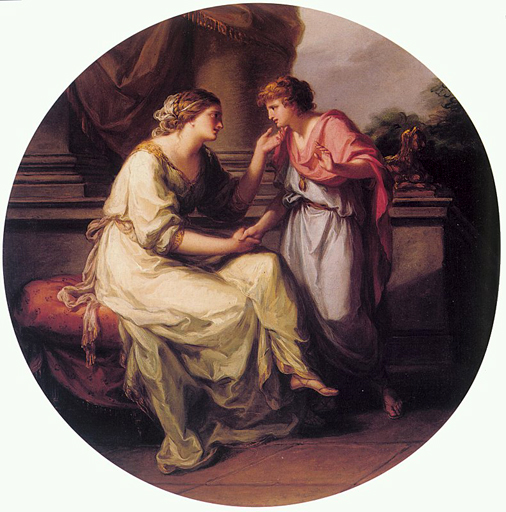

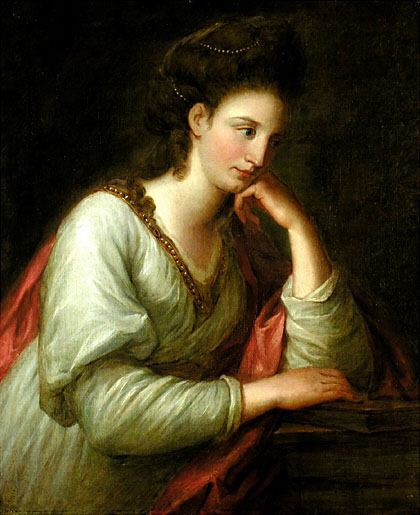
Source: Web Gallery of Art
Source: Art Renewal Center
Return to Pagina Artis
Return to Bruce and Bobbie's Main Page.